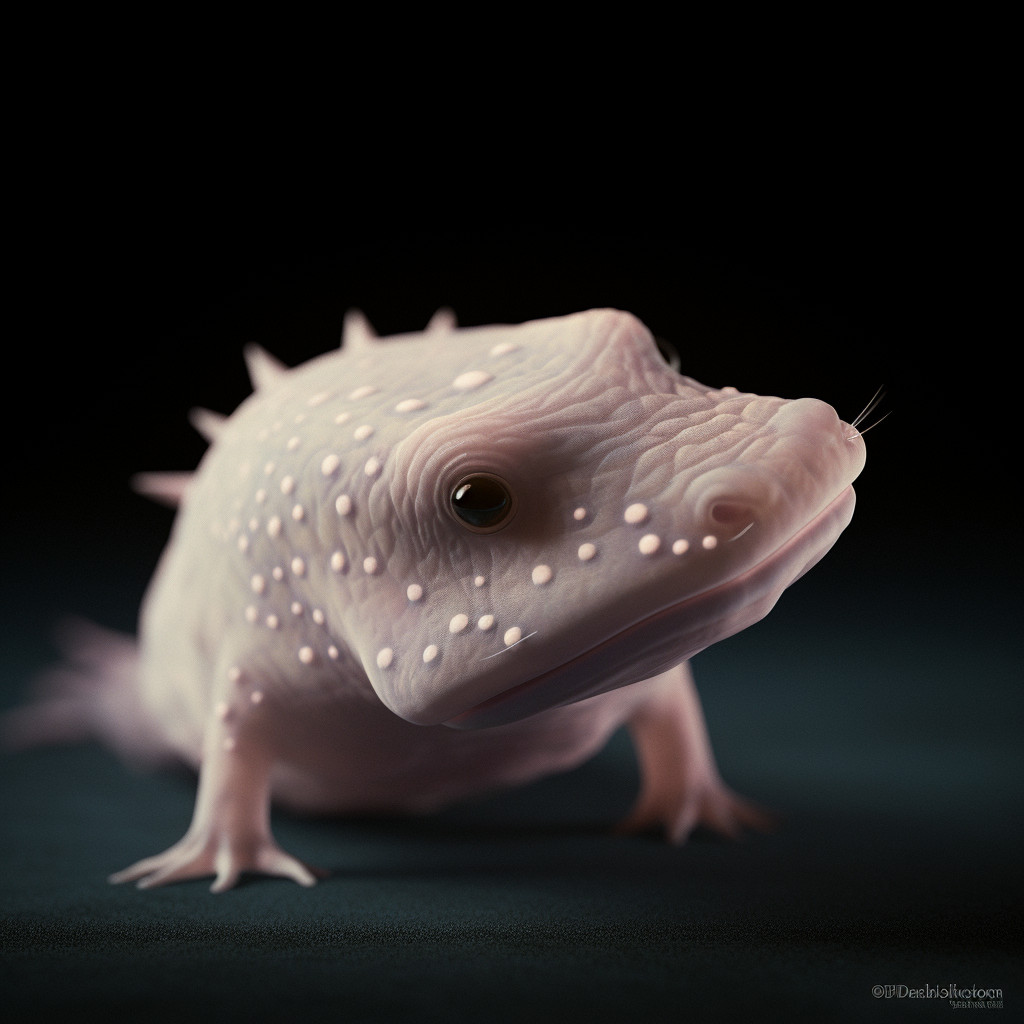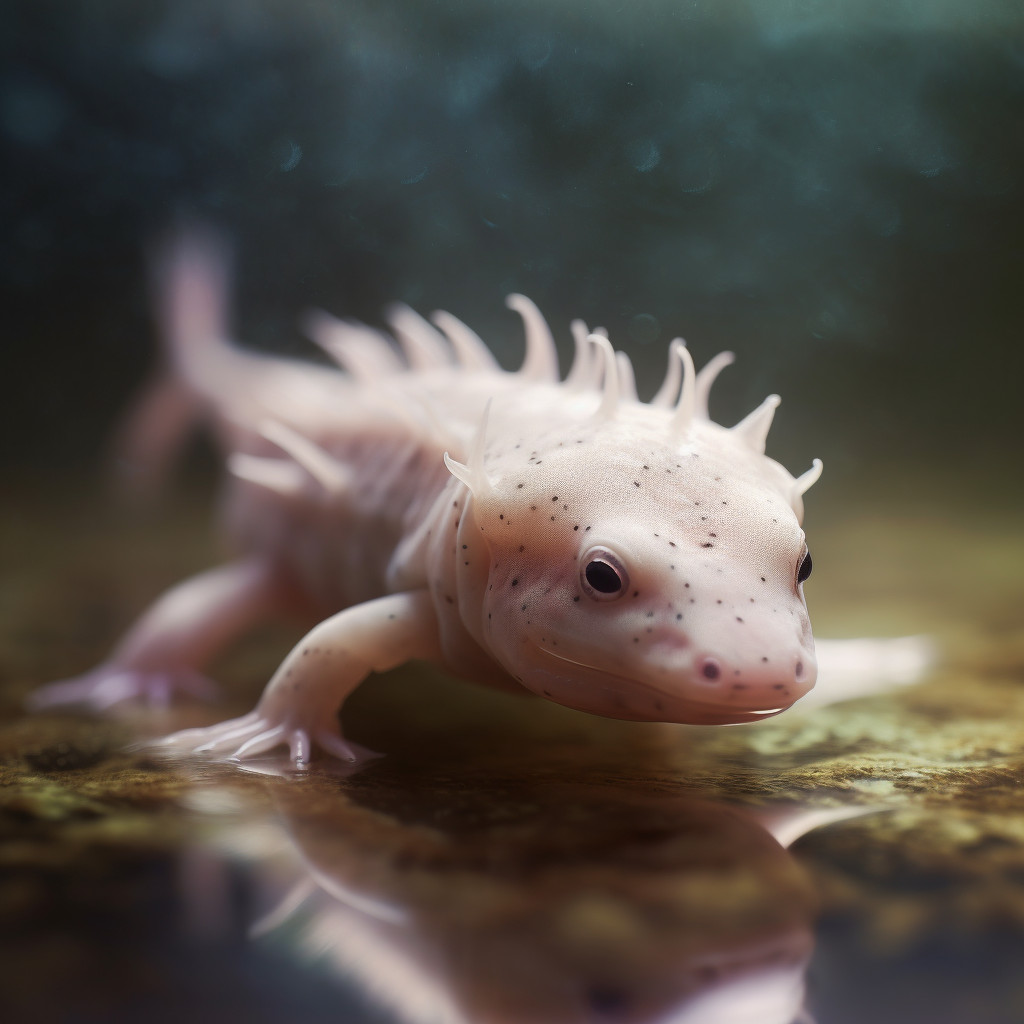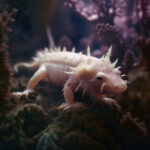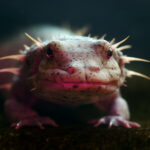Axolotls, also known as Mexican walking fish, are fascinating aquatic creatures that have gained popularity as pets. These unique amphibians have specific dietary requirements to ensure their health and well-being. One common question that arises among axolotl owners is whether they can be fed fish food. In this article, we will explore the topic of whether axolotls can eat fish food and provide you with all the information you need to know to keep your axolotl happy and healthy. So, let’s dive in and discover the answer to this intriguing question.
Key Takeaways
- Axolotls can eat fish food as a supplement to their diet.
- It is important to choose a high-quality fish food that is appropriate for axolotls.
- Axolotls should primarily be fed a diet of live or frozen foods, such as bloodworms and brine shrimp.
- Fish food should only be given occasionally and in small quantities to avoid digestive issues.
- Consult with a veterinarian or expert for specific dietary recommendations for your axolotl.
Understanding Axolotls: A Brief Overview

A. The Unique Dietary Needs of Axolotls
Axolotls are fascinating creatures that require a specific diet to thrive in captivity. As aquatic pets, their dietary needs differ from those of other animals. Understanding what to feed your axolotl is crucial for their overall health and well-being.
Axolotls are carnivorous amphibians, which means they primarily eat meat. In the wild, they feed on small aquatic creatures such as insects, worms, and small fish. When kept as pets, it’s important to replicate their natural diet as closely as possible.
B. The Role of Live Food in an Axolotl’s Diet
One of the best ways to ensure your axolotl receives proper nutrition is by incorporating live food into their diet. Live food not only provides essential nutrients but also stimulates their natural hunting instincts. Here are some popular live food options for axolotls:
-
Bloodworms: Bloodworms are a favorite among axolotls. These small, red larvae are rich in protein and are readily available at pet stores. You can feed them to your axolotl either live or frozen.
-
Earthworms: Another excellent choice for axolotls is earthworms. These can be collected from your garden or purchased from bait shops. Earthworms are a natural part of an axolotl’s diet and provide a good source of protein.
-
Daphnia: Daphnia are tiny crustaceans that can be found in freshwater ponds and lakes. They are a nutritious and easily digestible food source for axolotls. You can either collect them yourself or buy them from pet stores.
-
Brine Shrimp: Brine shrimp, also known as Artemia, are small aquatic crustaceans. They are available in both live and frozen forms and are a great source of protein for axolotls.
-
Blackworms: Blackworms are small, thin worms that are high in protein. They can be purchased from pet stores and are a suitable food option for axolotls.
While live food is an essential part of an axolotl’s diet, it’s important to note that it should not be the sole source of their nutrition. Axolotls also require a balanced diet that includes other food options such as pellets or gel food.
By providing a variety of live food and supplementing it with other appropriate food options, you can ensure your axolotl receives a well-rounded diet. It’s always a good idea to consult with a veterinarian or an experienced axolotl owner to determine the best feeding routine for your specific axolotl.
In the next section, we will explore the use of fish food as an alternative diet for axolotls and whether it is a suitable option for their nutritional needs.
Can Axolotls Eat Fish Food: A Comprehensive Analysis

A. The Suitability of Fish Pellets for Axolotls
When it comes to feeding our aquatic pets, such as axolotls, it’s essential to provide them with a well-balanced diet that meets their nutritional needs. One common question that arises is whether axolotls can eat fish food, specifically fish pellets. Let’s take a closer look at the suitability of fish pellets for axolotls.
Fish pellets are a popular choice for feeding various types of fish, but can they be a suitable option for axolotls as well? The answer is yes, but with some considerations. Fish pellets can be a convenient and readily available option for axolotl owners, especially if they already have fish in their care. However, it’s crucial to ensure that the fish pellets are appropriate for axolotls and meet their dietary requirements.
Axolotls are carnivorous amphibians, and their diet primarily consists of meat-based foods. While fish pellets are designed for fish, they often contain a blend of ingredients that may not fully meet the nutritional needs of axolotls. Therefore, it’s important to choose fish pellets that are specifically formulated for carnivorous aquatic animals like axolotls.
When selecting fish pellets for your axolotl, look for options that have a high protein content and are free from fillers or additives that may be harmful to axolotls. Additionally, opt for pellets that are easily digestible to ensure that your axolotl can efficiently absorb the nutrients from their food.
B. The Impact of Fish Flakes on Axolotls
Another common type of fish food is fish flakes. These thin, lightweight flakes are a popular choice for feeding various species of fish. But can axolotls consume fish flakes? Let’s explore the impact of fish flakes on axolotls.
Fish flakes are typically made from a mixture of ingredients, including fish meal, algae, and other additives. While fish flakes can be suitable for some fish species, they may not provide the necessary nutritional value for axolotls. Axolotls require a diet that is high in protein and low in carbohydrates, and fish flakes may not meet these requirements.
Furthermore, fish flakes are often designed to float on the water’s surface, which may not be ideal for axolotls. Axolotls are bottom-dwelling creatures and prefer to eat food that sinks to the bottom of their tank. Therefore, fish flakes may not be the best option for axolotls, as they may not be able to access the food easily.
If you choose to feed your axolotl fish flakes, it’s important to supplement their diet with other suitable foods to ensure they receive the necessary nutrients. This can include live or frozen foods such as bloodworms, brine shrimp, or daphnia. These foods closely mimic the axolotl’s natural diet and provide them with the essential nutrients they need to thrive.
C. Can Axolotls Consume Betta Food: A Closer Look
Betta fish food, also known as betta pellets, is specifically formulated to meet the dietary needs of betta fish. But can axolotls consume betta food? Let’s take a closer look at whether betta food is suitable for axolotls.
Betta food typically consists of a blend of ingredients that provide the necessary nutrients for betta fish. However, axolotls have different dietary requirements compared to betta fish. Axolotls require a higher protein content in their diet, while betta food may contain a higher percentage of carbohydrates.
While axolotls can consume betta food in small quantities, it should not be the sole source of their nutrition. Betta food can be used as an occasional treat or supplement to their regular diet. It’s important to remember that axolotls need a varied diet to ensure they receive all the essential nutrients they require for optimal health.
In addition to betta food, axolotls should be fed a combination of other suitable foods, such as earthworms, bloodworms, brine shrimp, and commercial axolotl pellets. These foods provide a well-rounded diet that meets their nutritional needs and promotes their overall well-being.
In conclusion, while fish pellets can be a suitable option for axolotls, it’s important to choose ones specifically formulated for carnivorous aquatic animals. Fish flakes may not provide the necessary nutritional value for axolotls and may not be easily accessible to them. Betta food can be given as an occasional treat or supplement, but it should not be the primary source of nutrition for axolotls. By providing a varied diet that includes appropriate foods, axolotls can thrive and lead healthy lives.
Live Food Options for Axolotls: A Detailed Guide
A. The Benefits and Risks of Feeding Live Fish to Axolotls
When it comes to feeding your axolotl, live fish can be a tempting option. Not only does it provide a more natural diet for these aquatic creatures, but it also offers a variety of benefits. However, there are also some risks to consider. Let’s take a closer look at the benefits and risks of feeding live fish to axolotls.
Benefits of Feeding Live Fish to Axolotls
-
Nutritional Value: Live fish are rich in essential nutrients, such as protein, vitamins, and minerals. These nutrients are crucial for the growth and overall health of your axolotl.
-
Stimulation of Natural Hunting Behavior: Axolotls are natural predators and enjoy hunting for their food. Feeding them live fish allows them to engage in their natural hunting behavior, which can provide mental stimulation and prevent boredom.
-
Variety in Diet: Offering live fish as part of your axolotl’s diet adds variety and can help ensure they receive a well-rounded nutritional intake. It can also help prevent them from becoming picky eaters.
Risks of Feeding Live Fish to Axolotls
-
Parasites and Diseases: Live fish can carry parasites and diseases that can be harmful to your axolotl. It’s essential to source the fish from a reputable supplier and quarantine them before feeding them to your axolotl to minimize the risk of introducing any harmful pathogens.
-
Injury to Axolotls: Some live fish, especially larger ones, may have sharp fins or spines that can injure your axolotl during feeding. It’s crucial to choose appropriate-sized fish that are not too large for your axolotl to handle.
-
Overfeeding and Obesity: Axolotls have a voracious appetite, and it can be easy to overfeed them with live fish. Overfeeding can lead to obesity, which can have detrimental effects on their health. It’s important to monitor their feeding and ensure they are receiving a balanced diet.
B. Other Live Food Alternatives for Axolotls
While live fish can be a beneficial addition to your axolotl’s diet, there are also other live food alternatives that you can consider. These options provide similar benefits to live fish while minimizing some of the risks associated with feeding them.
-
Bloodworms: Bloodworms are a popular live food option for axolotls. They are small, red larvae of the midge fly and are rich in protein. Bloodworms can be purchased frozen or live from pet stores and are readily accepted by axolotls.
-
Earthworms: Earthworms are another nutritious live food option for axolotls. They are easily obtained by collecting them from your garden or purchasing them from bait shops. Earthworms are a natural part of an axolotl’s diet in the wild and provide a good source of protein.
-
Daphnia: Daphnia are tiny crustaceans that can be cultured at home or purchased from pet stores. They are a great source of protein and can be a fun and interactive food option for your axolotl, as they swim around in the water.
-
Brine Shrimp: Brine shrimp, also known as sea monkeys, are small crustaceans that can be hatched from eggs. They are a popular live food option for many aquatic pets, including axolotls. Brine shrimp are rich in protein and can be a nutritious addition to your axolotl’s diet.
It’s important to note that while live food options can provide numerous benefits, they should not be the sole source of nutrition for your axolotl. It’s essential to offer a balanced diet that includes a variety of live food, commercial pellets, and occasional supplements to ensure your axolotl’s nutritional needs are met.
In the next section, we will explore the benefits and considerations of feeding your axolotl commercial fish food pellets, which can be a convenient and well-rounded option for their diet. A. Understanding the Dietary Flexibility of Fish
Fish are known for their diverse dietary habits, and their ability to adapt to different food sources is quite remarkable. While fish food is commonly available and formulated specifically for the nutritional needs of fish, it’s important to note that many fish species can also consume a variety of other foods. Let’s explore the dietary flexibility of fish and how it compares to the feeding habits of axolotls.
-
Omnivorous Nature: Fish, in general, exhibit a wide range of dietary preferences. Some fish are omnivorous, meaning they can consume both plant and animal matter. This allows them to adapt to different environments and find food sources that are readily available. Omnivorous fish have a more flexible diet compared to species that are strictly herbivorous or carnivorous.
-
Herbivorous Fish: Certain fish species have evolved to primarily consume plant matter. These herbivorous fish have specialized digestive systems that enable them to break down and extract nutrients from plant material. They often feed on algae, aquatic plants, and even fruits that fall into the water. Some examples of herbivorous fish include certain species of tilapia, silver dollars, and some types of cichlids.
-
Carnivorous Fish: On the other end of the spectrum, there are carnivorous fish that rely heavily on animal protein for their diet. These fish have sharp teeth and strong jaws that allow them to capture and consume other fish, invertebrates, and even small mammals. Examples of carnivorous fish include pike, bass, and many species of predatory cichlids.
-
Piscivorous Fish: Piscivorous fish are a subset of carnivorous fish that have specialized in feeding on other fish. They have evolved to be highly efficient hunters, with streamlined bodies and sharp teeth designed for capturing and consuming their prey. Examples of piscivorous fish include pike, muskellunge, and barracuda.
-
Feeding Strategies: Fish employ various feeding strategies depending on their dietary preferences. Some fish are filter feeders, using their specialized gill structures to extract small particles from the water. Others are bottom feeders, scavenging for food on the substrate. There are also fish that are surface feeders, consuming insects and other small organisms that float on the water’s surface.
B. How Axolotls and Fish Differ in Their Dietary Needs
While fish have a wide range of dietary preferences, axolotls have specific nutritional requirements that differ from most fish. Understanding these differences is crucial for providing proper care and nutrition to axolotls.
-
Axolotl Diet: Axolotls are primarily carnivorous, meaning their diet consists mainly of animal protein. In the wild, axolotls feed on small aquatic invertebrates, such as worms, insects, and crustaceans. They have a preference for live or frozen foods that mimic their natural prey. Axolotls have a slower metabolism compared to most fish, so their diet should be rich in protein and low in fat.
-
Feeding Habits: Axolotls are ambush predators, patiently waiting for their prey to come within striking distance. They have a suction-like feeding mechanism, where they rapidly open their mouths and create a vacuum to suck in their food. This feeding behavior is quite different from the active hunting strategies employed by many fish species.
-
Compatibility with Fish Food: While axolotls can consume some types of fish food, it’s important to choose appropriate options that meet their specific nutritional needs. Axolotls may eat fish pellets or flakes, but these should not be their sole source of nutrition. Fish food is often formulated to meet the dietary requirements of fish, which may not align perfectly with the needs of axolotls.
-
Axolotl Food Alternatives: To ensure the health and well-being of axolotls, it is recommended to supplement their diet with other food options. Live or frozen foods, such as bloodworms, brine shrimp, and daphnia, are excellent choices for axolotls. These foods closely resemble the natural prey of axolotls and provide the necessary nutrients for their growth and development.
In conclusion, while fish have a greater dietary flexibility and can consume a wide range of foods, axolotls have specific nutritional requirements that differ from most fish. While axolotls may eat some types of fish food, it is important to provide them with a varied diet that includes live or frozen foods to ensure their optimal health and well-being.
Exploring the Possibility of Human Food for Axolotls

A. The Potential Risks and Benefits
When it comes to feeding our aquatic pets, like axolotls, it’s important to provide them with a balanced and nutritious diet. While axolotls are primarily carnivorous and their diet mainly consists of live or frozen foods such as bloodworms, brine shrimp, and small fish, some axolotl owners may wonder if it’s possible to supplement their diet with human food. Let’s explore the potential risks and benefits of feeding axolotls human food.
Benefits of Human Food for Axolotls
-
Variety: Introducing some human food into an axolotl’s diet can provide them with a wider range of nutrients and flavors. This can help prevent dietary deficiencies and keep them interested in their meals.
-
Convenience: Human food is often readily available in our kitchens, making it a convenient option for axolotl owners. It can be more accessible than constantly purchasing live or frozen foods.
-
Nutritional Value: Some human foods, such as lean meats and vegetables, can offer nutritional benefits to axolotls. These foods can provide essential vitamins, minerals, and proteins that contribute to their overall health.
Risks of Human Food for Axolotls
-
Digestive Issues: Axolotls have specific dietary requirements, and their digestive systems are adapted to process live or frozen foods. Human food, especially processed or seasoned items, may be difficult for axolotls to digest and can lead to gastrointestinal problems.
-
Toxicity: Certain human foods, such as spices, herbs, and seasonings, can be toxic to axolotls. It’s crucial to avoid feeding them anything that contains ingredients harmful to their health.
-
Imbalance: Axolotls require a specific balance of nutrients in their diet. Relying solely on human food may result in an imbalance of essential nutrients, which can negatively impact their growth and overall well-being.
B. What Human Foods are Safe for Axolotls
While it’s important to exercise caution when considering human food for axolotls, there are a few options that can be safely incorporated into their diet. Here are some human foods that axolotls can consume in moderation:
-
Lean Meats: Cooked, unseasoned lean meats like chicken, turkey, or beef can be offered as occasional treats. Ensure the meat is thoroughly cooked and cut into small, bite-sized pieces to prevent choking hazards.
-
Vegetables: Some axolotls may enjoy small portions of blanched or steamed vegetables like spinach, zucchini, or peas. These can provide additional vitamins and fiber to their diet. However, it’s important to note that axolotls are primarily carnivorous, so vegetables should only be offered sparingly.
-
Insects: Axolotls can also consume small insects like mealworms or earthworms. These can be a good source of protein and can be purchased from pet stores or collected from your garden. Ensure the insects are free from pesticides or other harmful substances.
It’s important to remember that human food should only supplement an axolotl’s diet and not replace their primary food sources. Live or frozen foods like bloodworms and brine shrimp should still make up the majority of their meals.
In conclusion, while it is possible to incorporate some human food into an axolotl’s diet, it should be done with caution and in moderation. Always prioritize their specific dietary needs and consult with a veterinarian or axolotl expert for guidance on appropriate food choices. By providing a balanced and varied diet, you can ensure the health and well-being of your axolotl companion. Conclusion
In conclusion, axolotls can eat fish food as part of their diet. However, it is important to ensure that the fish food is suitable for axolotls and meets their nutritional needs. Axolotls are carnivorous amphibians and require a diet rich in protein. While fish food can provide some of the necessary nutrients, it should not be the sole source of their diet. Axolotls also require live or frozen foods such as bloodworms, brine shrimp, and small insects to maintain a balanced diet. It is essential to provide a variety of food options to ensure their health and well-being. Additionally, it is crucial to avoid overfeeding axolotls, as this can lead to obesity and other health issues. Regular monitoring of their weight and adjusting the feeding schedule accordingly is recommended. Overall, while fish food can be a part of an axolotl’s diet, it should be supplemented with other appropriate food sources to meet their nutritional requirements.
Frequently Asked Questions
What live food can I feed my axolotl?
Live food options for axolotls include bloodworms, earthworms, and small feeder fish. However, it’s important to ensure that the food is safe and free from any potential diseases.
Can axolotls eat fish pellets?
While axolotls can technically eat fish pellets, they are not the best option for their diet. Axolotls require a diet rich in protein, and fish pellets may not provide all the necessary nutrients.
Can fish eat anything besides fish food?
Fish can eat a variety of foods besides commercial fish food, including vegetables, fruits, and live foods. However, it’s important to ensure that any food is appropriate for the specific species of fish.
What live food can axolotls eat?
Axolotls can eat a variety of live foods, including earthworms, bloodworms, and small feeder fish. They can also eat brine shrimp and daphnia.
Can axolotls eat live fish?
Yes, axolotls can eat live fish. However, it’s important to feed them fish that are small enough for them to swallow whole, as axolotls do not chew their food.
Can axolotls eat fish flakes?
Fish flakes are not recommended for axolotls. They need a diet rich in protein, and fish flakes may not provide all the necessary nutrients. Instead, feed them live or frozen foods like worms and small fish.
Does axolotls eat fish food?
Axolotls can eat fish food, but it should not be their primary diet. Axolotls require a diet rich in protein, and fish food may not provide all the necessary nutrients.
Can axolotls eat betta food?
While axolotls can technically eat betta food, it is not the best option for their diet. Axolotls require a diet rich in protein, and betta food may not provide all the necessary nutrients.
Do axolotls eat fish food?
Axolotls can eat fish food, but it should not be their primary diet. They require a diet rich in protein, and fish food may not provide all the necessary nutrients.
What human food can axolotls eat?
Axolotls should not be fed human food. Their diet should consist of live or frozen foods like worms and small fish. Human food may not provide the necessary nutrients and can harm their digestive system.




